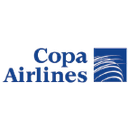Executive Secretary

IX International Symposium on Chemistry and Pharmaceutical Sciences
SIQF 2025
14th Conference “Chemical engineering: development, potential and its challenges” and VI International Symposium on “Technological and environmental safety”
Issue: In the textile company Sarex, during the production process of polypropylene bags, there is no diagnosis of the immission levels of gases, particles, and hygrothermal conditions affecting the work environment.
Objective(s): To evaluate the levels of pollutants, hygrothermal conditions, and ventilation in the finishing workshop of the textile company "Sarex" in Santa Clara.
Methodology: This includes:Conducting sampling of gases, particles, and hygrothermal conditions using a LIBELIUM company sensor system.Performing statistical post-processing of real-time monitoring.Assessing ventilation conditions.Proposing an investment plan for a gas and particle extraction system.
Results and Discussion: The sampling conducted reveals that the levels of SO₂, NO₂, and particles exceed the maximum permissible limits (NC Standard 2010:2014), CO₂ exceeds the occupational standard by 9 times, the average temperature (32°C) affects thermal comfort, and ventilation is insufficient. As a solution, an extraction system is proposed, including slot-type hoods, a baghouse filter, a centrifugal fan, and a 10.24 m chimney, with an investment amounting to $766,487.56 USD.
Conclusions: The evaluation confirms that the workshop has air pollution levels exceeding standards, with inadequate temperature and ventilation conditions that affect workers' health. The installation of the proposed extraction system is an effective measure to improve air quality, reduce exposure to pollutants, and minimize environmental impact. Additionally, it would lead to significant economic savings in occupational health costs.
Problemática: En la Empresa Textil Sarex durante el proceso de producción de sacos de polipropileno no se tiene un diagnóstico de los niveles de inmisión de gases, partículas y condiciones higrotérmicas que afectan el ambiente laboral.
Objetivo(s): Evaluar los niveles de contaminantes, condiciones higrotérmicas y ventilación en el taller de acabado de la empresa textil “Sarex” en Santa Clara
Metodología: Esta incluye: realizar muestreo de gases, partículas y condiciones higrotérmicas con un sistema de sensores de la compañía LIBELIUM, realizar posprocesamiento estadístico del monitoreo en tiempo real, evaluar condiciones de ventilación y hacer propuesta inversionista de sistema de extracción de gases y partículas.
Resultados y discusión: El muestreo realizado permite diagnosticar que los niveles de SO₂ , NO₂ y partículas, superan los límites máximos admisibles (norma NC 2010:2014), el CO₂ excede 9 veces el estándar laboral, la temperatura promedio (32°C) afecta el confort térmico y la ventilación es insuficiente. Como solución, se propone un sistema de extracción con captadores tipo ranura, filtro de mangas, ventilador centrífugo y chimenea de 10.24 m, cuya inversión asciende a $766,487.56 USD.
Conclusiones: La evaluación realizada confirma que el taller presenta niveles de contaminación del aire que superan los estándares, con condiciones de temperatura y de ventilación inadecuadas que afectan la salud de los trabajadores. La instalación del sistema de extracción propuesto es una medida efectiva para mejorar la calidad del aire, reducir la exposición a contaminantes y minimizar el impacto ambiental, además representaría un ahorro económico significativo en costos de salud laboral.
About The Speaker

Ing Taila Elena Rodriguez Berrio

Discussion


 Gold
Gold
 Gold
Gold
 Silver
Silver
 Silver
Silver